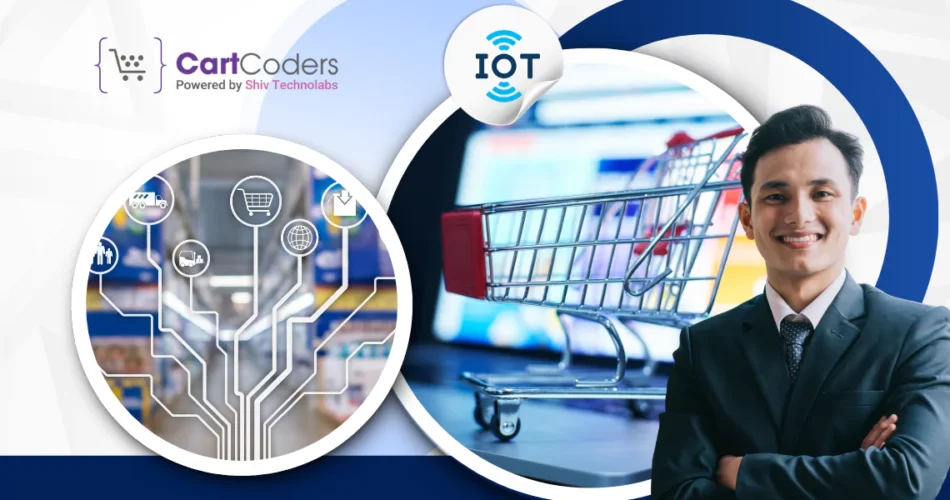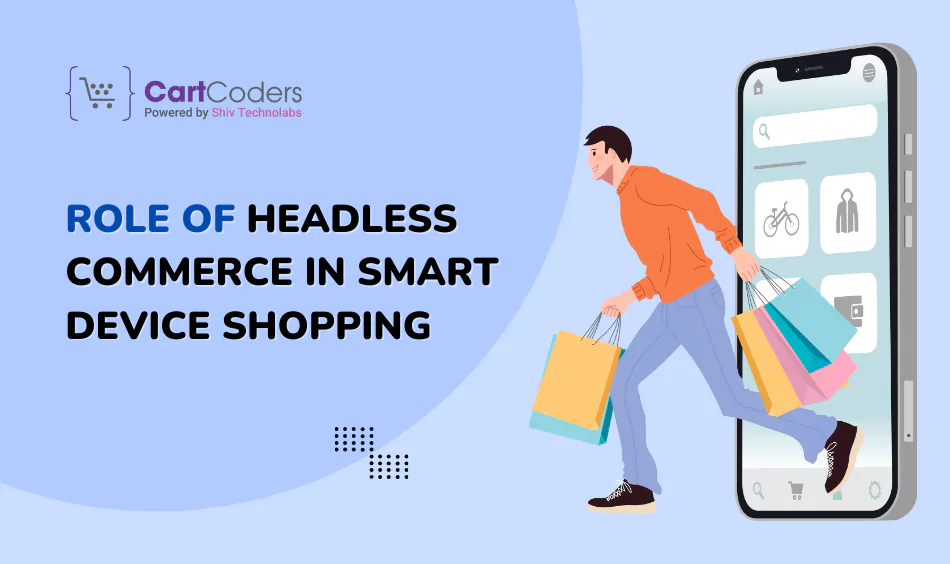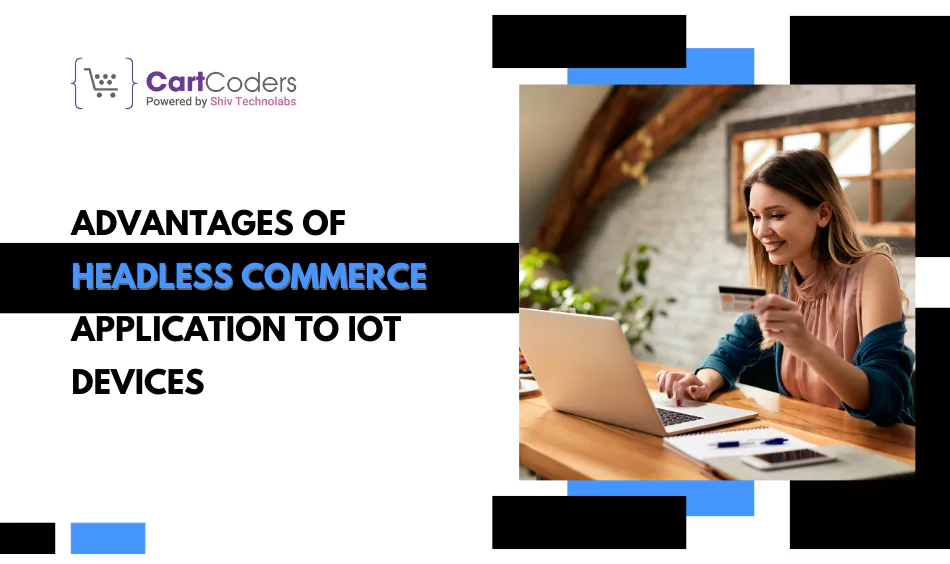Custom Engagement Solutions
Unlock tailored solutions with a free, no-obligation strategy session.
Expert Developers & Engineers on Demand
Scale Your Team with Skilled IT Professionals
Expert Guidance for Digital Transformation

Headless commerce is no longer a buzzword in eCommerce; it is increasingly becoming the foundation of how connected technology sells. As the market of headless commerce is supposed to reach $1.74 billion in 2025, and the industry of IoT is estimated to reach $1 trillion in the given year, the connection of both trends is changing the way in which transactions take place.
Instead of being tethered to a specific storefront or channel, API-first commerce IoT gives brands the ability to locate their store in any connected interface, including digital kiosks, wearable devices, in-car systems, and more. This versatility is leading to a new kind of smart device commerce wherein the consumer experience is frictionless, context-responsive, and entirely uncoupled with a conventional screen.
At CartCoders, you get best-in-class Headless development services that allow brands to ride this change and command the future of omnichannel selling.
In IoT, headless commerce involves decoupling commerce-backend technology from presentation. Consider your fundamental commerce engine supported in the cloud with intelligent appliances such as fridges, voice assistants, and kiosks calling the API to browse, buy, and reorder.
That is why that is important to IoT headless commerce and API-first commerce of IoT:

Headless commerce also opens up smart device commerce as your backend remains adaptable and interoperable.
You do not require individual e-commerce engines for each device. The back-end headless:
Suppose you have a smart fridge that is out of milk. It makes an API call and puts an order boom, delivered. Or imagine a networked automobile: you pull up to a toll booth, and before you ever come to the toll booth, your car system has detected the charge and paid you through an API access into your commerce system. That is headless commerce IoT integration.
Suppose you had a smartwatch. It can tell about your hydration status; recommendations are offered when drinking electrolytes. That is customized shopping through IoT using API commerce. Your user does not browse but receives smart offers at the most opportune time, they are really useful. That is smart device shopping done correctly.
To see how this plays out in real scenarios, here’s a table that lays it all out.
| IoT Device Type | Integration Example | Use Case |
| Voice Assistants (Alexa, Google Assistant) | API connection to store backend | Voice-based grocery ordering |
| Smart Fridges | Reordering capabilities | Auto-restock essentials |
| Wearables | Health & fitness product purchases | Buy supplements or fitness gear instantly |
| Connected Cars | Fueling or toll payments | Pay without leaving vehicle |
| Digital Signage | QR-based ordering | Order from public kiosks instantly |

Headless backend smart device commerce is not only cool, but it is also convenient.
APIs are quick. The sales of smart devices are instantaneous- a voice command or sensor information will initiate orders.
The same commerce engine is communicating to your smart fridge and smartwatch. The UX remains the same, such that branding remains in one line even when the interface of each device is completely different.
Do you want to use a new type of device, such as smart mirrors, in retail shops? You never rewrite commerce; you aim the device at your API-first commerce for an IoT platform.
IoT is developing smart cars, connected health, and AR wearable devices. Smart home commerce headless architecture ensures that you can scale system growth with new devices without collapsing under them.
Let’s dig into how to make it work.
Platforms like Shopify Hydrogen, commercetools, and BigCommerce (plus CartCoders’ custom headless ecommerce development services) offer:
Progressive Web Apps are lightweight, work offline, and load fast. Ideal for non-traditional devices that may have limited bandwidth or intermittent connections.
Test across:
Some stories make this concrete.
You say, “Buy milk.” Alexa mashes your faceless backend, adds milk to the cart, puts your card on your credit card, and books delivery. There are no applications, no display; it is commerce through voice.
Low eggs are sensed. The fridge gains access to the commerce backend, submits a reorder, and confirms once it is scheduled. It is headless commerce in your kitchen.
Your health monitor recognizes that you have reached a goal. A suggestion comes up in the form of an API: “Need recovery drinks?” Click, order, finished. That is customized touch device retail.
Here’s what’s coming next.
Headless architecture is increasingly being adopted by more companies as IoT touchpoints require flexibility. Headless ecommerce on smart devices is likely to leave the experimental and become standard.
Your coffee machine reorders beans when it senses you’re running low. To order groceries, the refrigerator does it weekly. IoT headless commerce provides subsequent commerce with negligible user constraints.
AI tracks habits of use; your smart car knows your route and places an order in advance at your local coffee shop; your bracelet will tell you when to get new footwear.
CartCoders is best headless ecommerce development company with team of headless commerce experts to develop top notch solutions for brands across the globe. We create a headless backend to IoT that drives a frictionless smart device business. We are not another headless ecommerce development agency; we focus on smart devices commerce.
We offer:
Whether it is headless commerce or IoT integration as a concept, CartCoders can bring it into practice.
IoT headless commerce is no longer a peripheral idea; it has become the key to businesses aiming to reach more customers across the globe. Headless commerce provides the flexibility, velocity, and uniformity needed to be successful in the new device ecosystem.When you feel it is time to ride the wave of omnichannel commerce IoT devices, then CartCoders, a headless commerce development agency, is your way to go. Need a custom design workflow, device-API integration, and scalable architecture on the back end? We deliver the best results that meet your business expectations.
Count on us for headless commerce IoT integration services and get ready to dominate the tech world.
Projects delivered in 15+ industries.
95% retention rate, building lasting partnerships.
Serving clients across 25+ countries.
60+ pros | 10+ years of experience.